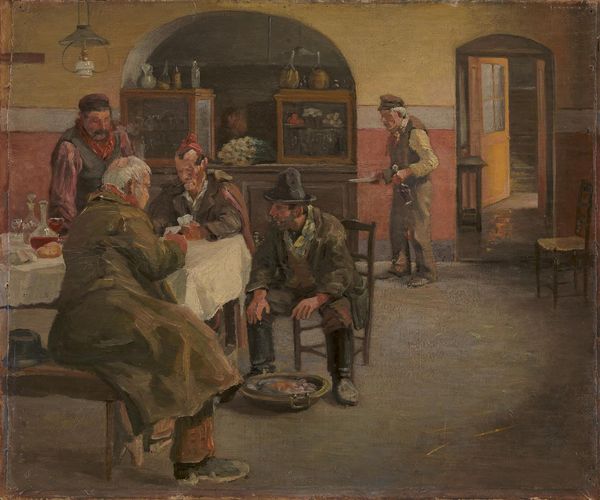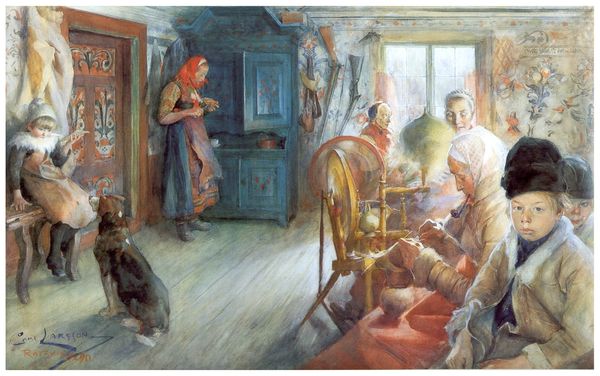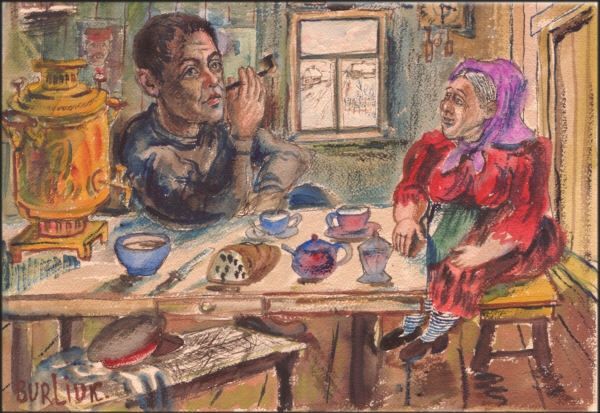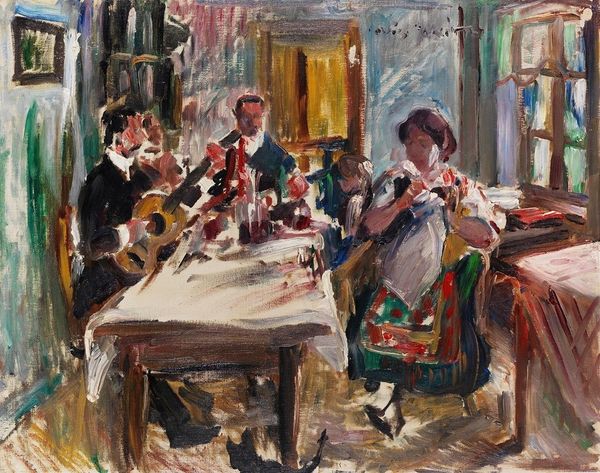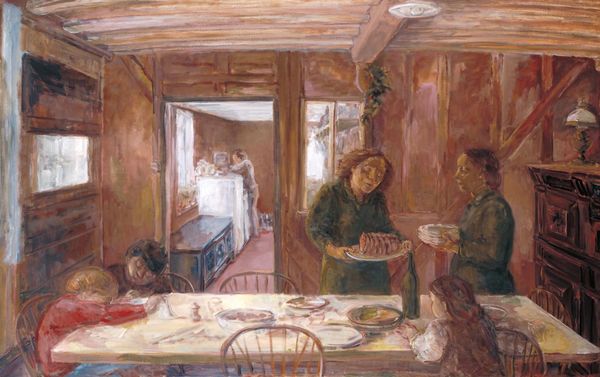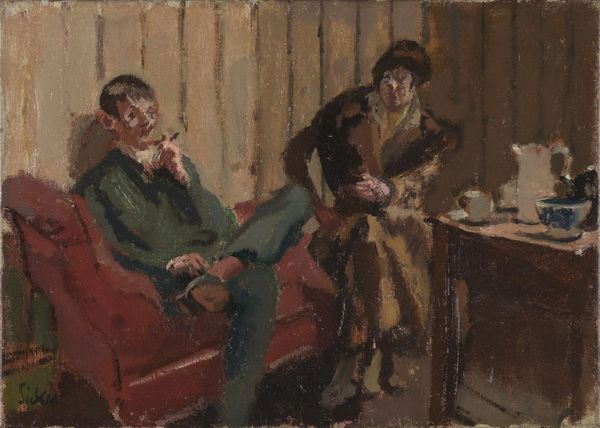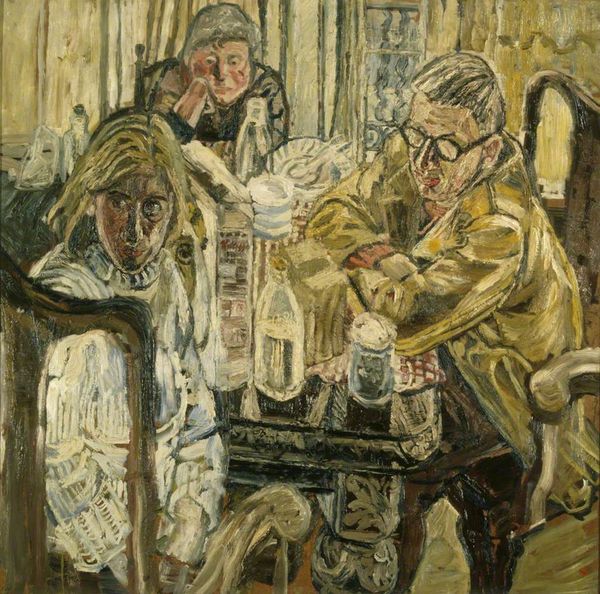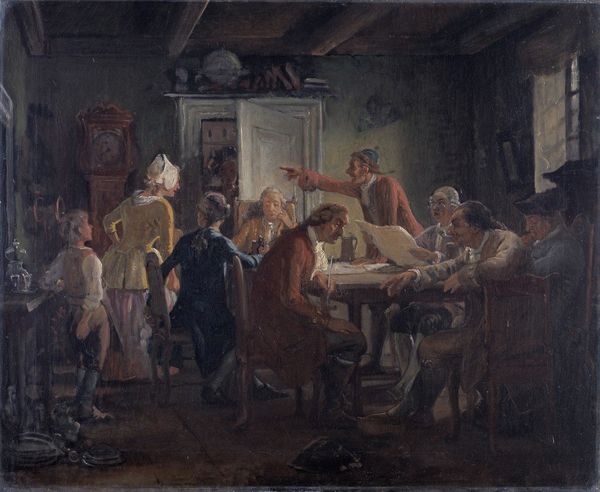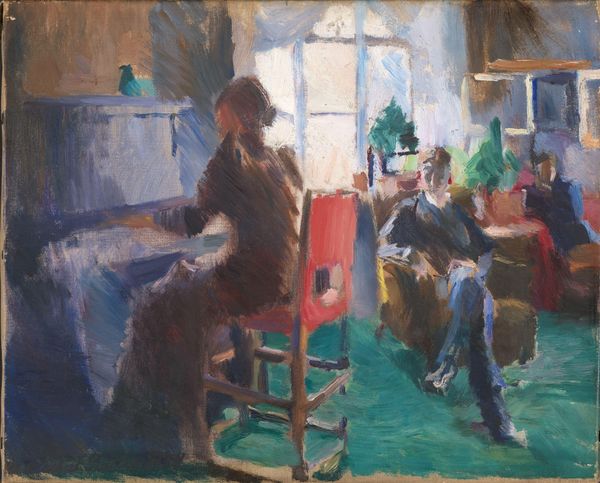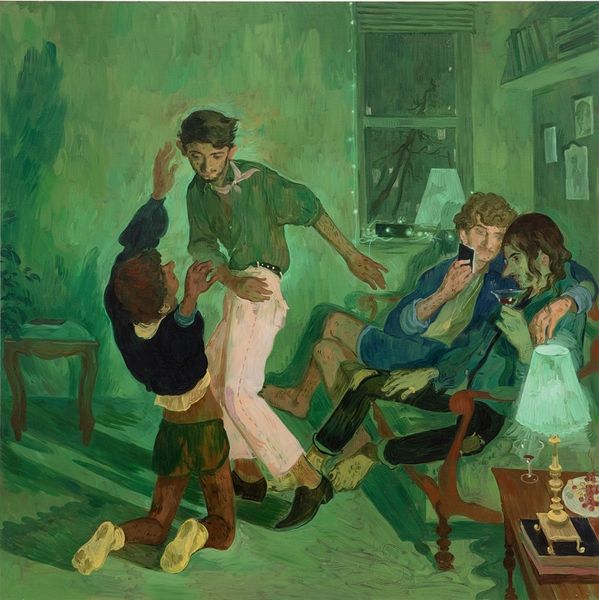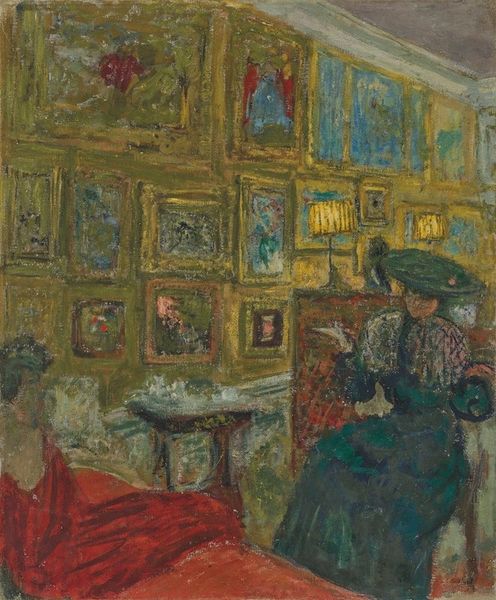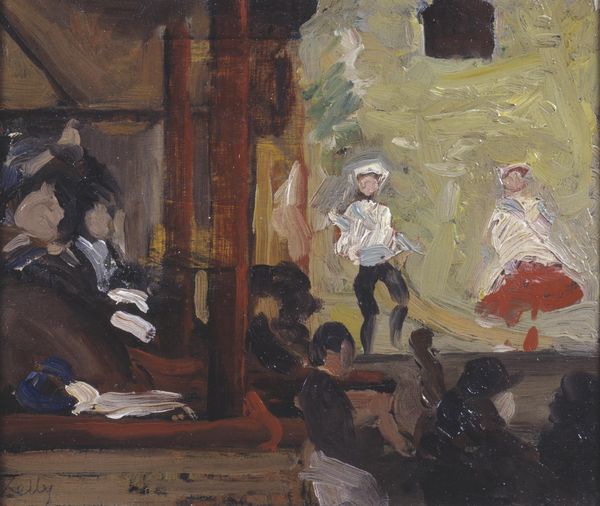
Dimensions: support: 635 x 762 mm frame: 798 x 922 x 75 mm
Copyright: © The estate of Oscar Kokoschka | CC-BY-NC-ND 4.0 DEED, Photo: Tate
Editor: So, this is Oskar Kokoschka’s "Marianne-Maquis," and the Tate doesn't give us a date. It looks like an oil painting, and it strikes me as a really unsettling image of post-war life. What's your take on this? Curator: It's a powerful piece, isn’t it? Consider the blatant eroticism in counterpoint to the trauma experienced during times of conflict, and who is afforded the privilege to express their sensuality in art. Do you think this piece is a critique, or perhaps an endorsement, of that power? Editor: That's a fascinating point. It feels like a critique, highlighting the gendered power dynamics after conflict. I hadn't considered it that way initially. Curator: Exactly. Kokoschka is forcing us to confront uncomfortable truths about whose stories are told, and how, in the aftermath of violence. Editor: That has really changed how I perceive the painting. Thanks! Curator: Glad to have shared my perspective. It’s a great piece for sparking such crucial conversations.
Comments
tate 6 months ago
⋮
http://www.tate.org.uk/art/artworks/kokoschka-marianne-maquis-t05485
Join the conversation
Join millions of artists and users on Artera today and experience the ultimate creative platform.
tate 6 months ago
⋮
1942 was a year of deadlock during the Second World War. Whilst the Soviet Union was battling the Nazis in the East, there were repeated calls for British and American governments to launch a Second Front in Western Europe. In Marianne-Maquis, Kokoschka vents his criticism of the allies’ delay by showing British war leaders Winston Churchill and General Montgomery drinking tea in the Café de Paris in Soho. The central figure is Marianne, the traditional personification of France, now linked to the ‘Maquis’, the French Resistance. Gallery label, November 2006
